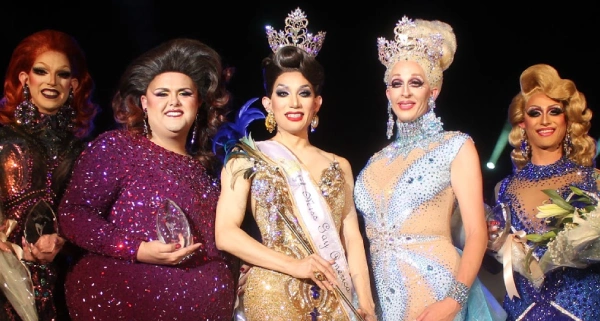
When Campbell's Soup released a controversial commercial featuring two male actors sharing an intimate moment, it made headlines all over the world. The ad featured two Campbell's soup cans in the shape of their "classic" labels — only this time, one was perched on top of the other as if kissing.
The commercial sparked a debate about public acceptance for same-sex relationships and whether or not it's appropriate for companies to express political views through advertising. On one side were those who believed that companies should stay out of politics entirely by depicting what people see as "normal" in advertisements. Others felt that promoting diversity is always a good thing, so why not be open to LGBT perspectives? Whatever the opinion may be, the fact is that this commercial has raised important questions about how we view different types of relationships.
Ultimately, the success or failure of these types of ads depend on how viewers perceive them to be. Whether they're seen as inclusive or offensive depends entirely up on personal circumstances and beliefs. What stands out is that while we continue to move towards being more accepting as a society, there are still plenty of debates and controversies concerning LGBT rights — especially when it comes to advertising!
Overview of the commercial's storyline and message
The gay Campbell's Soup commercial features a heartwarming storyline that centers around a young man named Max and his relationship with his boyfriend at Thanksgiving dinner. As the couple arrives at Max's family home, they are greeted by his parents and extended family with open arms.
Throughout the commercial, Max's mom is seen cooking a pot of Campbell's Soup as she prepares the Thanksgiving dinner. As the family sits down to eat, Max's dad reaches for a can of Campbell's Soup and offers it to his son's boyfriend, welcoming him as a member of the family.
The message of the commercial is one of inclusivity and acceptance. It shows that love knows no boundaries and that everyone, regardless of their sexual orientation, deserves to be welcomed and embraced by their loved ones. The use of Campbell's Soup in the commercial is a subtle nod to the idea of comfort and warmth, which is what many people associate with the holiday season and family gatherings. Overall, the commercial is a powerful statement on the importance of family, love, and acceptance.
Positive reception from the LGBTQ+ community and allies
The gay Campbell's soup commercial has received a positive reception from the LGBTQ+ community and allies. The commercial features a real-life family, consisting of two dads and their son, enjoying a warm bowl of soup together. The ad is heartwarming and inclusive, showcasing the diversity of families and promoting acceptance and love.
The commercial has been praised for its representation of the LGBTQ+ community in mainstream media and for its message of inclusivity. Many people have taken to social media to express their support for the ad, commending Campbell's for being progressive and standing up for equality.
Additionally, the commercial has been successful in reaching a wider audience beyond the LGBTQ+ community. It has been shared widely on social media and has sparked conversations about the importance of representation in advertising.
Overall, the positive reception of the gay Campbell's soup commercial highlights the need for more inclusive and diverse representation in media and advertising. By showcasing different types of families and promoting acceptance, the ad has made a significant impact on viewers and has helped to promote a more inclusive society.
Negative backlash from conservative groups and individuals
Unfortunately, the gay Campbell's Soup commercial has received negative backlash from conservative groups and individuals. Some have called for a boycott of the company, claiming that the ad is promoting an "agenda" and is not appropriate for families. Others have gone as far as to make homophobic comments and express their disapproval of the LGBTQ+ community.
It's important to note that this type of backlash is not uncommon when it comes to LGBTQ+ representation in media. Despite progress being made in recent years, there are still those who are uncomfortable with seeing LGBTQ+ individuals and families portrayed in a positive light.
However, it's important to remember that representation matters. LGBTQ+ individuals and families deserve to see themselves reflected in media and advertising just like anyone else. It's also important for companies to take a stand for inclusion and diversity, even if it means facing backlash from certain groups. Ultimately, it's up to consumers to decide whether or not they support companies that promote inclusivity and acceptance.
Analysis of the impact of the commercial on LGBTQ+ representation in advertising
The Gay Campbell’s Soup Commercial made a powerful statement in support of the LGBTQ+ community and had a far-reaching impact on LGBTQ+ representation in advertising. Since the commercial was released in 2019, there's been an exponential increase in the number of ads featuring openly gay characters or proudly displaying rainbow flags.
The commercial also provided much needed visibility to sexual minority groups, conveying to them that they are welcomed and accepted by society. On top of that, it also showed that families don't need to be limited to one kind of relationship; this commercial depicted a family with two lesbian mothers, thus challenging traditional notions of what a family should look like.
In addition to embracing diversity, the ad resonated because it reminded us all about the importance of love and acceptance for those who identify as LGBTQ+. This commercial helps prevent social stigmas from seeping into brand image and encourages businesses that want to reach out from larger audiences from including people from all walks of life. The overall effect is inspiring more companies to introduce inclusive policies and messaging campaigns during not only Pride Month, but throughout the entire year.







